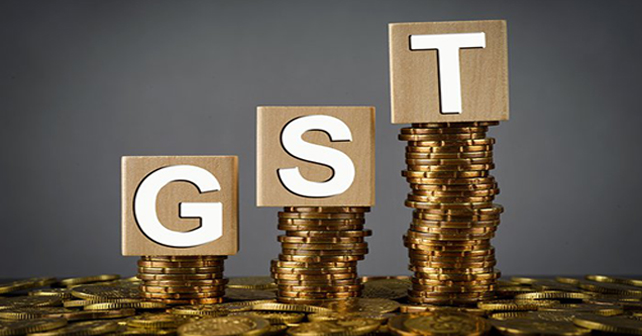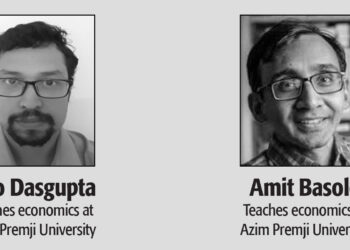S. Rajaratnam
Renowned Tax Management Consultant
and Prolific Writer
To tax and to please, no more than to love and be wise, is not given to men.
– Edmund Burke
What is GST: General Goods and Services Tax (GST), which is expected to come into force from 1st July, 2017 is the greatest tax reform in India involving both Central and State Governments, besides combining sales tax, excise and service tax into a single integrated tax. Though the tax is collected at every stage of supply of goods or services, credit id given for tax paid in all prior transactions of the same goods and services comprised in the transaction travelling through different hands avoiding thereby the cascading effect of tax on tax, if tax had been levied at multiple points without such credit. It is more comprehensive than Value Added Tax (VAT), which was confined only to sales tax.
GST encourages reporting of transactions fully necessary to avail tax credit for tax paid in all earlier stages by the manufacturers, wholesaler, semi-wholesaler and retailers before the products reach the consumer.
Advantages: It is easier to administer a single tax combining both direct and indirect taxes. In view of the tax credit system, the leakage of revenue, at its worst, is minimal with improvement in tax collection offering scope for reducing the tax rate. With tax credit available, the tax burden will be considerably reduced. There is, therefore, scope for better collections and increase in business.
The transactions both domestic and inter-State are covered. There need be no separate officialdom for Centre and the States, so that the taxpayer has to file a single return and deal only with a single authority.
In view of removal of cascading effect by avoiding tax on tax, the goods will become cheaper for the consumers improving the turnover with larger demand for goods with money saved. It is, therefore, good for the economy with tax becoming less of an impediment to growth. The entire chain of the transactions becomes transparent, as for example, when goods pass say from a dealer in timber to furniture maker, dealer in furniture and finally consumer having at least three stages but in actual practice with some more intermediaries, it passes through many hands. In GST, the retailer gets credit for tax paid at all earlier stages, since the billing at every stage would identify the aggregate tax paid at all earlier stages in respect of goods and services covered by the bill.
It is not, therefore, surprising that GST is already the most popular system of taxation in most countries.
Credit for input tax: The mechanism for grant of input tax eligible as credit for tax paid in earlier stages on an all India basis requires extensive use of most updated software on information uploaded in Form GSTR-1. Expertise necessary for the purpose is available in India.
The preliminary step is for every supplier of goods and services to be registered, when the turnover exceeds the threshold limit proposed at Rs. 20 lakhs. The taxpayers may be either manufacturers or dealers, residents or non-residents or may be even casual supplier. Service providers like those in e-commerce also form part of the chain.
Elaborate procedure has been prescribed for loading the information in GST Portal. Migration from service tax, excise and sales tax to GST starts with Unique Identity Number for every registered dealer for identification enabling credit to which they are entitled.
Tax on sale by unregistered dealers will have to be paid by the purchasers (registered) under what is known as reverse charge, but there is no damage as the tax so paid will be available for credit.
Taxable event: Taxable event either for inter-State sales under CGST (Central) or domestic sales under SGST (State) occurs at the time of supply of goods and/or services except in the case of manufacturers liable at the time of removal of manufactured goods as under the present excise law. The bill/ invoices are expected to bear the date of taxable event, that is the date of supply and services. The amount charged will identify the tax separately in the bill/invoice.
Rate of tax: Rate of tax will be four-fold at 5/12/18/28% the lowest rate being for items of common consumption, while 12/18% will include the bulk of goods and services with 28% being applied for what are described as ultra luxuries and demerit and sin goods. Airconditioners, refrigerators, washing machines etc. are not classified as ultra luxuries, while demerit and sin goods like liquor, tobacco, aerated drinks and pan masala etc. will suffer maximum rate. Some of the supplies may also be zero-rated as for goods and services under export with a view to encourage exports in the light of other advantages for the economy.
Reaction of Trade and Industry : The new tax has been widely welcomed by trade and industry overcoming its initial doubts and misgivings. There may be teething problems initially as in the matter of pricing. There need be no dramatic changes.
Reservations of the States: Apprehension widely expressed by many manufacturing States like Tamil Nadu is of reduction in collection of excise and sales tax now collected from manufacturers, because of tax credit for tax paid by the suppliers from the other States. There is a promise to make good such loss by reasonable division of tax collected as between Centre and the State compensating such loss.
Taxpayers’ ordeals: Registration, filing of returns, preparations of invoices and claim of refund would require familiarity with the formalities of law. Some rules are, however, only transitional till the migration from existing law to GST is complete. Once it is done, employees should be trained in computer digitalisation and GST regime. What is required is a network with all parties playing their role, so that failure of one would not upset the entire system.
Legislative process: The speed with which GST Council and the Government have worked with both houses of Parliament passing the legislation is commendable as it shows the commitment of the Government with all the parties including the opposition playing a positive role as handsomely acknowledged by the Prime Minister.
There were some reservation as it is feared that the State autonomy in the federal structure as agreed under the Constitution runs some risk. This was expressed forcibly by M.Veerappa Moily in Rajya Sabha, when he addressed the Finance Minister also a member of the Rajya Sabha in following words, “It is the biggest step in federal law, federal finances. You are a representative of the Council of States. Finance Minister, you are denying rights to yourself.” He was not impressed with the claim that GST is a major reform and a game-changer, but described it as a baby step forward pointing out that the present Government itself was blocking the introduction of this tax, when it was in opposition. He found fault with the Government for hurrying through this law considering its intricacies and the problems yet to be finally resolved especially in fixing rates of tax.
Conclusion
There may be scope for differences in application of four differential rates as regards choice of commodities for which rates will have application. Some of the States are interested in some products either because they are producers or consumers of such products. But then, such difficulties are not insurmountable since a reconciliation is possible, because the States have to adopt a give and take policy, because every State is both a producer and consumer for some or other goods, so that compromise is possible.
Is this tax as rational as it is claimed to be? Answer depends upon the way, it is implemented. The advice for those in doubt is tell them to “Wait and See”.
In view of removal of cascading effect by avoiding tax on tax, the goods will become cheaper for the consumers improving the turnover with larger demand for goods with money saved. It is, therefore, good for the economy with tax becoming less of an impediment to growth.






